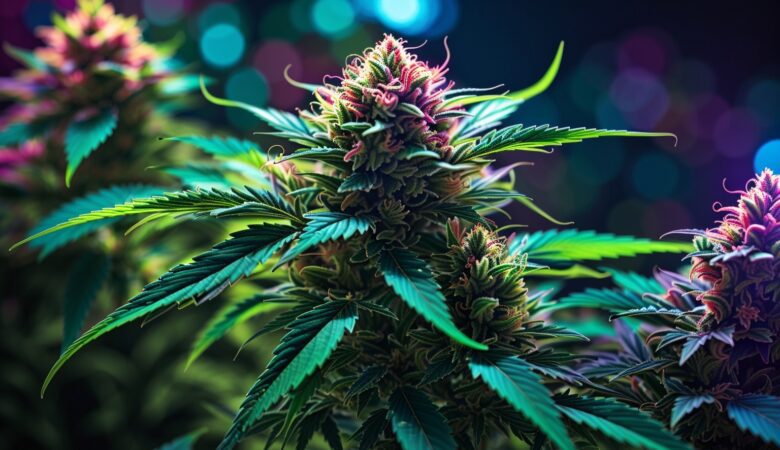Unlike plants which are dependent on photoperiods, an autoflowering marijuana is one which will independently achieve flowering after a period of vegetative growth, without any need for light. Because autoflowering cannabis does not have to adhere to specific light schedules in order to begin blooming, you can provide the plants with as much light as possible throughout the entire life cycle. This means this strain of cannabis will automatically flower in nearly any type of light, and since this plants does not require 12/12 light cycles to begin producing flowers, it can be grown in 24 hours of light from seed to harvest.
Unlike their counterparts, which are photoperiod, autoflowering plants do not need to be altered to change their light cycles in order to produce flowers. While some autoflowering strains will not yield the same amount of pot as regular strains, they do yield flowers at a much faster rate, which allows multiple grows to be done in as little time as a single regular grow.
Autoflowering marijuana plants are generally smaller than other marijuana plants, particularly when compared with Sativa varieties (Indicas are generally shorter, regardless of whether they are autoflowering or flowering with a light schedule.
Because of their cannabis ruderalis lineage, autoflowering seeds tend to be smaller and compact in size compared to common Sativas, Indicas, and hybrids of those two Sativas. We now see Ruderalis plants everywhere in the world, these powerful plants are highly adaptable to the diseases and insects around them, and do their best to bloom ASAP, producing flowers and seeds quicker than any Sativa or Indica cannabis plants. Today, ruderalis plants are typically crossbred with other strains in order to achieve higher potency along with shorter growing times.
Through careful breeding, expert cultivators have managed to successfully blend ruderalis autoflowering properties with a number of different cannabis indica and sativa strains, which results in seeds that retain all the potency and production characteristics of your favorite strain while adding in the benefits of aging-based flowering. Ruderalis has evolved so that it does not depend on the light hours in order to bloom, but rather flowers according to the time of year. Cannabis Ruderalis, having adapted to the harsh conditions, has evolved to have the capability of blooming according to their own terms.
Ruderalis plants are likely a wild variant of Cannabis sativa, it is a bushy, smaller plant, has adapted to automatically flower, and it will attain full maturity in 8-11 weeks under harsh conditions and in just about any growing conditions. The primary characteristic of the genetics known as Ruderalis is it is extremely quick rate of flowering and the fact that flowering does not depend on photoperiod, it happens naturally as soon as the plant is sufficiently mature. A feature which gives a Cannabis plant the ability to begin and finish its flowering stage due to aging the plant, without the reduction in the amount of daylight hours.
Photoperiod Cannabis responds to changes in the natural environment, particularly in the amount of daylight available in a growing season: As the summer months recede and days get shorter, marijuana plants start blooming. When grown outdoors, cannabis plants that are grown from conventional seeds begin to flower, or produce buds, when autumn approaches and the sun sets sooner and later.
Growers do not have to worry about changing their lighting schedules to start and sustain a blooming stage, like they do when growing flowering cannabis with the female light cycle. Essentially, this type of cannabis will automatically bloom in almost any lighting conditions, meaning that it does not have to follow the 12-hour/12-hour day/night cycle in order to bloom, since it can flourish under 24-hour light conditions from seedling to harvest.
You can grow an autoflowering plant from seed to harvest even if you are only given 12 hours, or even 8 hours, of light per day, and it will still produce buds and be ready for harvest. If you are skilled and you find a particularly fast strain, you could get your plant from seed to full bloom in as little as 8 weeks. When considering the harvest, it is important to keep in mind that one of the advantages of growing cannabis autoflowering strains is that most growers are able to have multiple harvests per year (since each autoplant has an extremely short life span).
You might be thinking that since autoflowering seeds grow very fast, that they cannot yield as much as regular varieties, and in some ways, you are correct. A plant with the ability to autoflower has a fast life cycle, so they produce buds and flowers within a short period, with no strict requirements for lighting/darkness. Like all strains of marijuana, autoflowering varieties have evolved to feature higher THC levels and fully steriled in order to yield feminized autoflowering genetics, which further decreases the likelihood of male plants rapidly decimating the plant.
Thanks to Cannabis ruderalis genes, autoflowering cannabis strains are also able to remain compact in size from seed to harvest. At their heart, autoflowering strains are a result of the crossbreeding of the lesser-known cannabis plant, Cannabis ruderalis, with its lesser-known cannabis plants sister species, Cannabis sativa and Cannabis indica. Although wild cannabis ruderalis plants have little to no THC (tetrahydrocannabinol), growers around the world have produced some incredible autoflower strains, crossing those wild varieties with some of the best commercial varieties.
As a result, this autoflowering sister species (or possibly subspecies of Cannabis sativa, as some autoflower geneticists think) had to evolve in order to survive. Generally, the grow time for an autoflowering weed strain is fairly short, lasting around 2-4 weeks, at which point the autoflowering cannabis plants begin automatically developing buds. For instance, some autoflowers may bloom as soon as three weeks to 30 days after the seeds are planted, whereas many photoperiod varieties require months to go through a transition from their vegetative to their flowering phase.





Leave a Reply